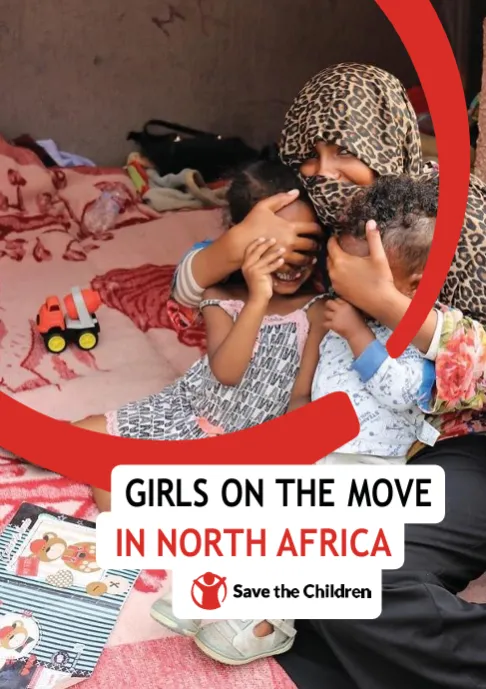
Study: Research
Girls on the Move in Egypt, Ethiopia, and Sudan
Publication year:
2020
English
Format:
pdf (916.3 KiB)
Publisher:
Save the Children International
Over the past years, the world has witnessed record levels of mixed migration, mainly originating from and hosted within developing countries. Individuals and families migrate for a variety of reasons, some choose to leave to seek education and employment opportunities or to escape poverty, while many are forced to leave their homes, fleeing natural disasters, conflicts and violence, discrimination, or persecution. 70.8 million individuals were forcibly displaced in 2018, 52% of whom are children. Whatever the reason for their journey, migrating children – especially those traveling alone – find themselves extremely vulnerable to a variety of risks, including physical and sexual violence, exploitation, and abuse.
In this context, the Swiss Agency for Development and Cooperation (SDC) has collaborated with Save the Children (SCI) through a four- year programme, to build the protection and self-reliance of children and youth in vulnerable displacement situations along East African migration routes, starting with Egypt, Sudan, and Ethiopia. In order to design evidence-based intervention, four regional research pieces were undertaken to inform programme development and design. The findings and conclusions served to support the development of relevant interventions along the route, ensuring that SCI’s activities will reach the most vulnerable children and youth and effectively strengthen their self-reliance and address acute protection needs.
The Girls on the Move Analysis explores the intersection of gender and migration: gendered norms and cultural practices often act as specific drivers on girls, pushing into migration; whilst increasingly, this decision-making process is understood as a form of strategizing. Migration becomes a potential opportunity, that itself is rife with gendered opportunities, risks, exploitations, and vulnerabilities. The Girls on the Move research tries to capture some of these gendered realities of children and youth who are migrating, focusing on better understanding the experience of girls and young women in the three target countries. The structure of the report tries to follow migratory routes and the focus, methodologically, was on capturing the voices of girls and young women at different stages of their migratory journeys.
The publication is part of the series conducted simultaneously. It was spearheaded by Save the Children’s East and South Africa Regional Office, Regional Programme Unit.
Read full abstract
View & Download
English
1 Documents
Document information
Publisher
Format
Content type
Rights
© Author/Publisher
Found a mistake? Help us improve!
If you have noticed a document assigned to the wrong author or any other inaccuracies, let us know! Your feedback helps us keep our data accurate and useful for everyone.
Share
Link


